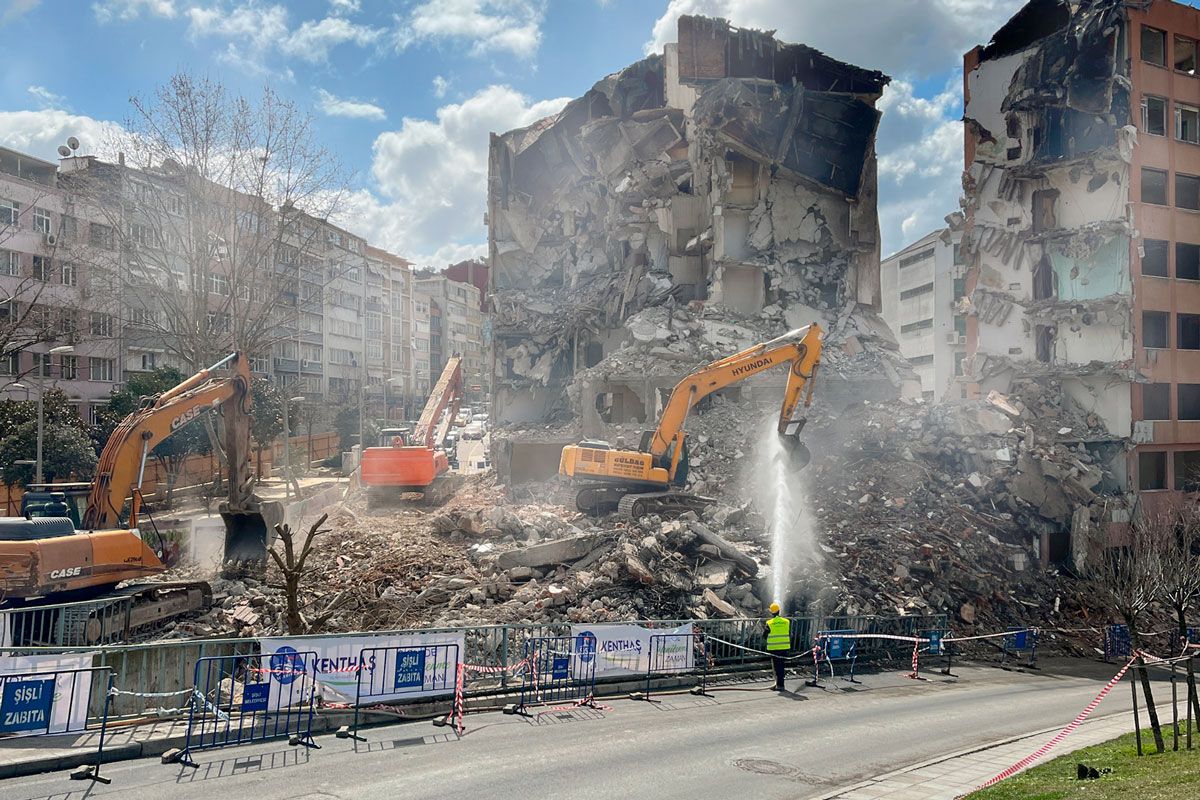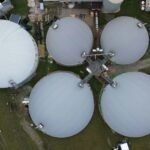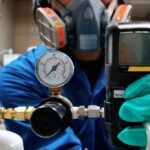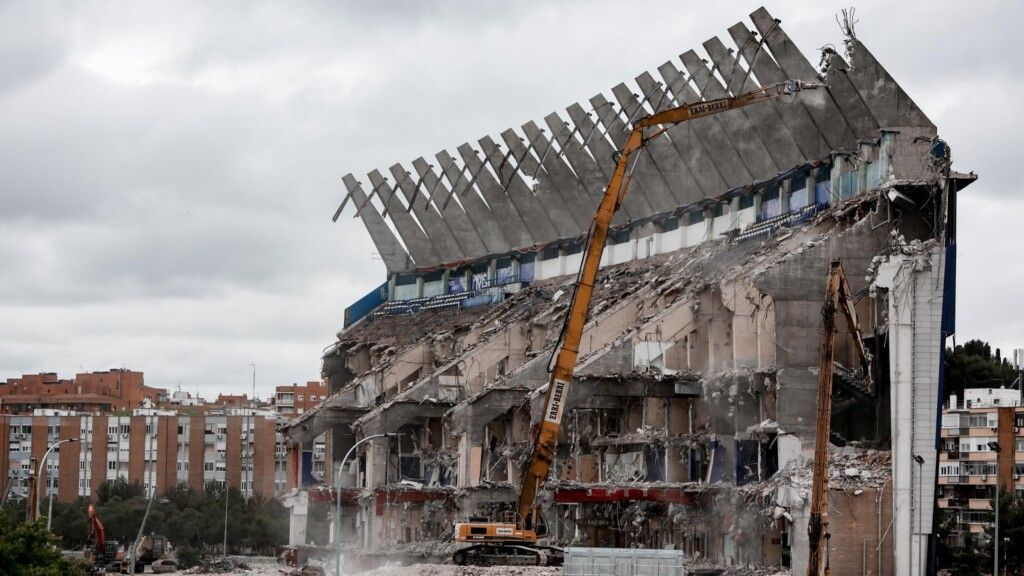Construction works, while essential for urban development, are also one of the main sources of air pollution in cities. Earthworks, demolition, the use of heavy machinery, and the constant movement of materials produce large amounts of dust and pollutant gases that directly affect the health of both workers and the general public. On top of this, there is the ever-present noiseImagine waking up every morning at 5:00 a.m. to the relentless roar of a motorway just metres from your window. Experiencing such high-intensity noise is n...
Read more pollution, which also impacts the wellbeing and quality of life of those living or moving near construction sites.
In this article, we take a closer look at the environmental impact of construction, with a particular focus on air pollution. We explore its main causes, consequences, regulations, and the most effective technologies for monitoring and control. We’ll also show you how advanced solutions such as Kunak’s air monitoring systems are helping to reduce these impacts and support safer, cleaner and more sustainable construction.
Why does construction pollute the air?
Construction activities, whether in urban or industrial environments, generate a variety of emissions that contribute significantly to air pollution. Although they often go unnoticed compared to more visible sources like traffic or heavy industry, their environmental impact is considerable and, in many cases, difficult to manage without proper monitoring and mitigation systems in place.
Main sources of emissions on urban construction sites
Pollution from construction sites generally originates from three key sources: demolition dust, heavy machinery, and material transport.
- The demolition of buildings releases vast amounts of fine particles into the air, which can remain suspended for hours or even days, depending on weather conditions.
- The machinery used to excavate, level or erect structures typically runs on diesel fuel, producing pollutant gases such as nitrogen oxides (NOx) and carbon monoxide (CO)The carbon monoxide (CO) is an invisible gas (colorless and odorless) that, at the same time, is a silent killer because in just a few minutes it exhibits ...
Read more. - Finally, the constant movement of trucks, cranes and other vehicles generates additional dust and emissions, especially in unpaved or high-traffic areas.
Particulate matter emissions (PM10 and PM2.5)
One of the most concerning pollutants in construction contexts is particulate matter (PM)Atmospheric particulate matter are microscopic elements suspended in the air, consisting of solid and liquid substances. They have a wide range of sizes an...
Read more, particularly the finer fractions like PM10 and PM2.5. These solid or liquid particles suspended in the air are invisible to the naked eye, yet they can penetrate the human respiratory system and worsen respiratory, cardiovascular, or neurological conditions. In densely populated areas, constant exposure to high PM levels can have severe cumulative effects—both for workers and residents living near the sites. They also reduce visibility and degrade overall air qualityAir quality refers to the state of the air we breathe and its composition in terms of pollutants present in the atmosphere. It is considered good when poll...
Read more in the surrounding area.
Air Quality Innovation in Just 1 Click
Stay informed about the air you breathe!
Subscribe to our newsletter to receive the latest updates on environmental monitoring technology, air quality studies, and more.
Other common pollutants on construction sites
Alongside particulate matter, construction works also release other significant air pollutantsAir pollution caused by atmospheric contaminants is one of the most critical and complex environmental problems we face today, both because of its global r...
Read more, such as nitrogen oxides (NOx), carbon monoxide (CO), volatile organic compounds (VOCs), and sulphur dioxide (SO₂). These gases are primarily emitted from the combustion of fossil fuels in engines and generators. Their presence can lead to irritation, respiratory issues, and chemical reactions in the atmosphere that contribute to the formation of ground-level ozone and acid rain, impacting not just the immediate surroundings but also wider areas.
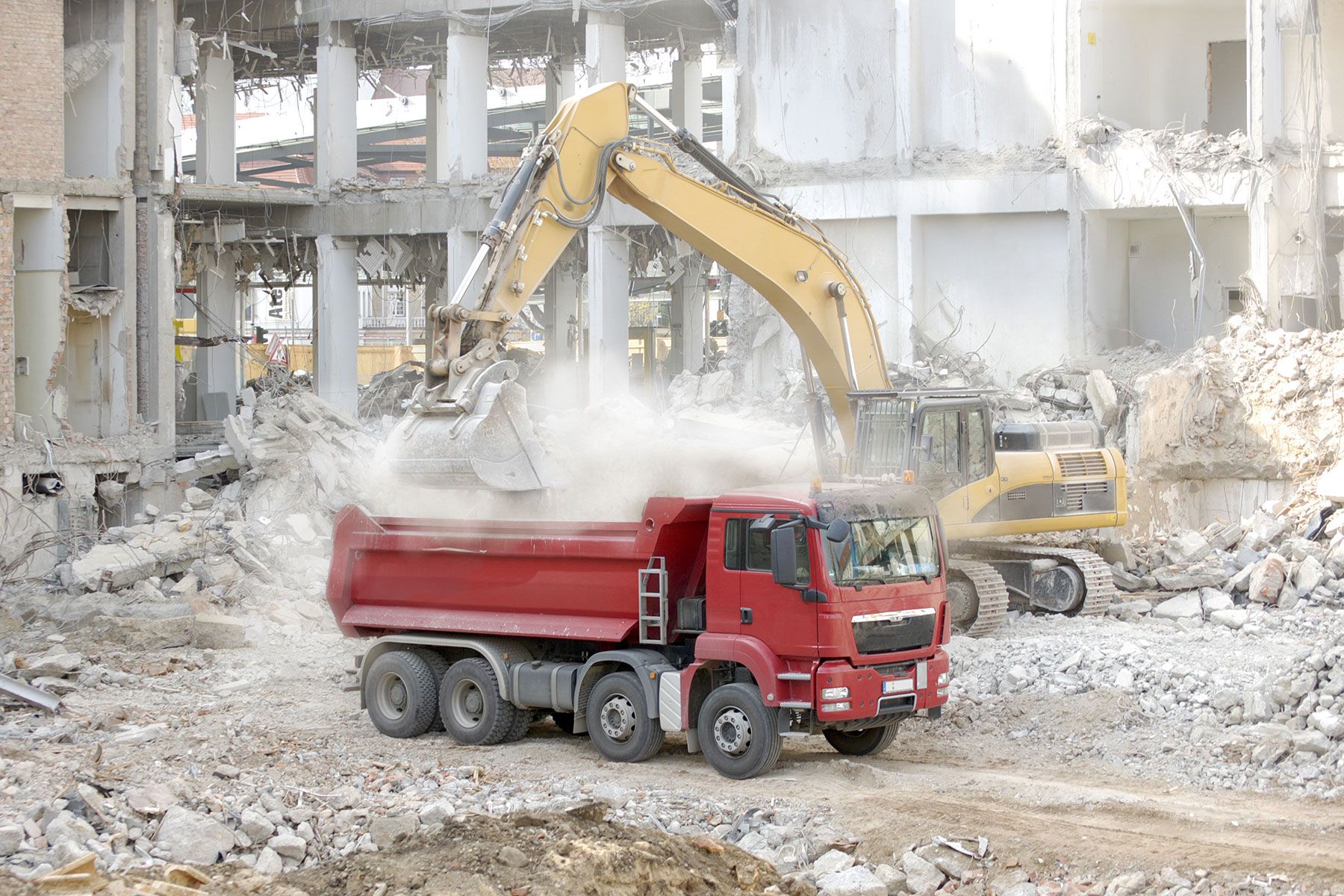
Environmental impact of construction works
Environmental impact of construction works
Air quality degradation in urban areas
Construction works in urban areas are among the primary contributors to air pollution. In these densely populated zones, continuous exposure to high levels of pollutants can significantly deteriorate air quality. The dust produced by demolition and earthworks, combined with gases emitted by machinery, mixes with other airborne pollutants to form a toxic “soup” that affects both residents and passers-by.
In particular, elevated levels of particulate matter (PM10 and PM2.5) and gases such as nitrogen oxides (NOx) and carbon monoxide (CO) contribute to the formation of tropospheric ozoneTropospheric ozone (O3) or ground-level ozone is a gas found in the lowest layer of the Earth's atmosphere, the troposphere, which extends up to 10 kilomet...
Read more, a secondary pollutant linked to health issues and worsening air pollution. The accumulation of these pollutants in densely populated areas increases the risk of respiratory and cardiovascular diseases.
Health consequences for workers and the public
Prolonged exposure to air pollution generated by construction activities affects both site workers and nearby residents. For workers, inhaling fine particles and toxic gases can lead to chronic respiratory problems such as asthma, bronchitis and other lung diseases. In dusty environments, there is also a higher risk of developing occupational diseases like pneumoconiosis.
As for the general population, constant exposure to high pollutant concentrations increases the likelihood of cardiovascular diseases, lung cancer, fertility issues, and even neurological disorders. Children, the elderly, and individuals with pre-existing health conditions are particularly vulnerable to these effects.
Cumulative effects on the environment and biodiversity
The environmental impact of construction goes beyond human health—it also affects biodiversity and urban ecosystems. Emissions from construction activities can disrupt the ecological balance of nearby areas, harming local plants and animals. Particulate matter and chemical pollutants can damage vegetation by hindering photosynthesis and causing the death of sensitive species.
Moreover, dust settling in nearby water bodies can alter water conditions, affecting aquatic life. Over time, the accumulation of pollution may lead to biodiversity loss and weaken the resilience of urban ecosystems.
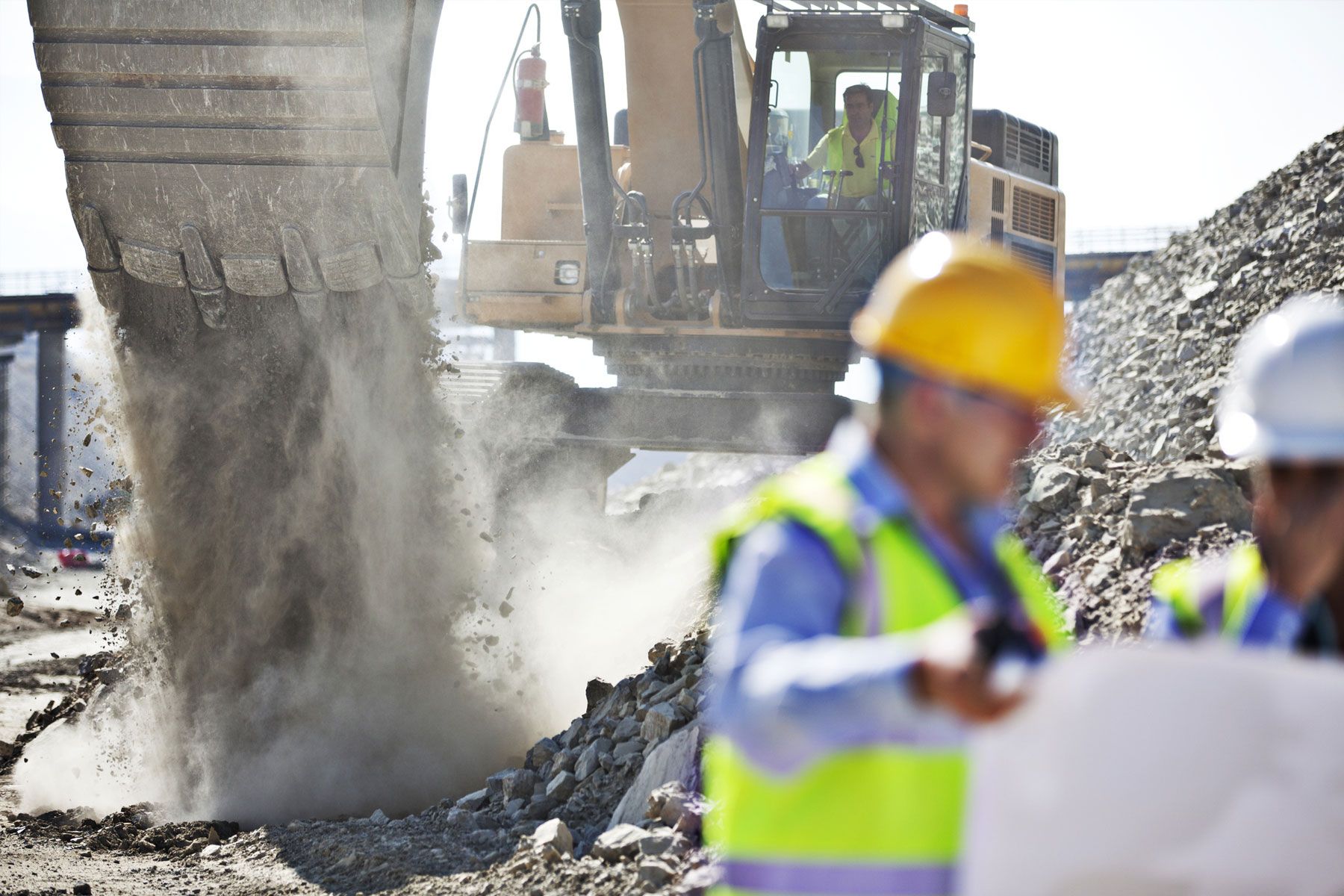
Dust on construction sites: the invisible enemy – Source: OZmist
Dust on construction sites: the invisible enemy
What is construction dust and why is it so dangerous?
Dust generated on construction sites comes mainly from demolition activities, earthmoving, the use of heavy machinery, and the transport of materials. This dust contains a mixture of particles of various sizes, including fine particulates such as PM10 and PM2.5, which are especially harmful to human health.
Unlike larger particles, which are expelled from the respiratory system through coughing or sneezing, fine particles can penetrate deep into the lungs and even enter the bloodstream, causing inflammation, infections, and chronic illnesses. Additionally, construction dust may contain toxic substances from building materials, such as asbestos or heavy metals, which further increase its health risks.
How is particulate matter measured on construction sites?
Monitoring particulate matter in construction zones is crucial to assess the impact of building activities on air quality. The most common instruments are air quality monitors that detect real-time concentrations of fine particles like PM10 and PM2.5.
These devices work by capturing airborne particles and analysing them using light scattering or filter-based technologies. Monitoring stations, such as those developed by Kunak, allow continuous data visualisation and support immediate decision-making to mitigate environmental impact—for instance, by activating dust suppression systems such as water spraying or physical barriers to control dust dispersion.
These systems can also trigger alerts when pollutant levels exceed regulatory thresholds, enabling timely corrective actions to protect both workers and nearby communities.
Real-world cases of dust-related impact in cities
In many cities, the effects of dust from construction sites have become clearly visible. In Madrid, for example, during the demolition of the old Vicente Calderón stadium, dust control systems were implemented to protect nearby workers and residents. Despite these efforts, air quality measurements showed elevated levels of fine particles, which affected the health of people in the surrounding area.
Another notable case is the construction of the Paris 2024 Olympic Village, where dust control was a top priority to prevent harmful exposure to demolition materials. Continuous monitoring and the use of advanced technologies such as Kunak air quality stationsAir quality stations are systems dedicated to monitoring atmospheric pollution, essential for measuring the concentration of pollutants in a specific area....
Read more were essential to keeping pollution levels under control and reducing health risks.
These examples demonstrate that, despite efforts to reduce the environmental impact of construction, dust remains a major public health challenge. However, with the right tools for monitoring and control, these effects can be mitigated, paving the way for cleaner, safer and more sustainable construction practices.
Air pollution and noise: two sides of the same problem
Construction sites contribute not only to air pollution through the emission of gases and particles, but also to significant noise pollution. These two environmental issues are closely interconnected and have a direct impact on the quality of life of both residents and workers nearby. Controlling both is essential for achieving sustainable and responsible construction practices.
Construction noise: acoustic pollution and regulation
Noise pollution is one of the most disruptive forms of environmental impact in urban construction zones. It stems mainly from the operation of heavy machinery, vehicle movement, and demolition activities. This type of acoustic contamination can exceed the limits established by local regulations, which typically define maximum decibel levels and restrict noisy activities to specific hours to prevent disturbances to the population.
These regulations govern both sound intensity and permissible time frames, but compliance largely depends on proper monitoring systems and effective noise management strategies on site.
How construction noise affects physical and mental health
Prolonged exposure to high levels of construction noise has both physical and psychological effects. Physically, it can cause sleep disturbances, high blood pressure, cardiovascular problems, and even increase the likelihood of workplace accidents due to stress and fatigue. Mentally, it is associated with anxiety, irritability, and stress-related disorders, particularly in vulnerable populations such as children, the elderly, and construction workers.
Sound stress also negatively affects work performance and can lead to long-term impacts on mental well-being if not properly managed.
Simultaneous monitoring of air quality and noise: an integrated approach
Since air pollution and noise pollution are among the most critical environmental impacts of construction sites, a combined monitoring system is key to managing them effectively. Thanks to advanced technologies, such as those developed by Kunak, it is now possible to conduct real-time air monitoring of particulate matter (PM10, PM2.5) while simultaneously measuring noise levels.
This integrated environmental monitoring approach ensures a more efficient management of health risks and contributes to the well-being of workers and local communities. It also facilitates the implementation of mitigation measures, such as acoustic barriers or dust control systems, to reduce both forms of pollution simultaneously.
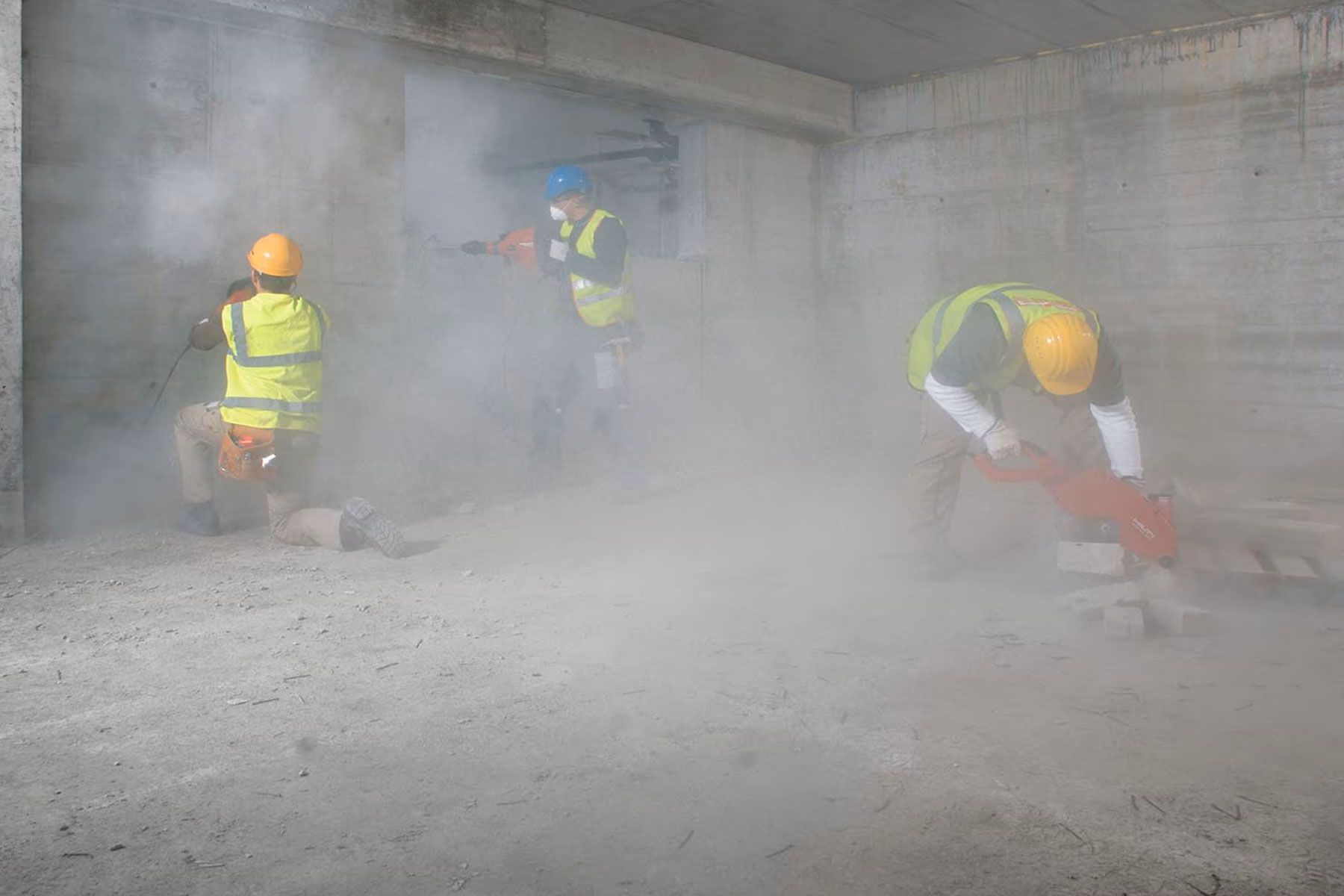
Regulations governing pollution on construction sites – Source: Hilti
Regulations governing construction site pollution
Environmental regulations play a vital role in managing pollution from construction activities. In many countries, these rules are designed to protect public health, safeguard the urban environment, and ensure a better quality of life for communities near construction zones. Adhering to these regulations is essential—not only to avoid fines or delays, but also to encourage more sustainable and responsible construction practices.
Legal limits on particle and gas emissions
Laws regulating the emission of particulate matter—such as PM10 and PM2.5—and gases like NOx, CO, and SO₂ are clearly defined in many national and regional frameworks. These construction emissions standards set the maximum allowable concentrations for pollutants during demolition, building, and transportation phases.
Although limits vary by country and region, the goal is always the same: to prevent health risks and protect nearby communities and ecosystems. To ensure full environmental compliance, real-time air quality monitoringControlling air quality is an essential task in order to enjoy optimal environmental conditions for healthy human development and to keep the environment i...
Read more systems like those developed by Kunak are essential. These technologies provide accurate, continuous data on air quality levels, allowing project managers to stay within legal thresholds and avoid penalties.
Environmental plans and permit requirements
Before breaking ground, most construction projects are required to submit a detailed environmental management plan (EMP) to local authorities. These plans outline the measures to be taken to reduce dust emissions, gas pollutants, noise pollution, and waste generation.
In many jurisdictions, obtaining an environmental permit is a legal prerequisite for starting construction. These licenses often depend on the approval of the EMP and may involve periodic inspections and data reporting. Without the appropriate documentation, projects can face serious delays or even be halted entirely.
Non-compliance cases and penalties
Failing to comply with environmental construction regulations can result in financial penalties, temporary work stoppages, and even the requirement to implement corrective measures. These may include the installation of emission control systems, updates to environmental management plans, or additional remediation efforts.
These enforcement actions highlight the importance of using advanced monitoring solutions, such as Kunak’s real-time stations, to stay compliant and reduce environmental impact. Reliable data is the key to staying ahead of regulation and maintaining both productivity and environmental integrity.
Key differences between Europe, the U.S., and Latin America
Construction-related pollution control regulations differ significantly across regions:
- In Europe, regulations tend to be more stringent and aligned with the European Green Deal, which aims to drastically reduce emissions in critical sectors, including construction.
- In the United States, Federal Environmental Standards set specific limits on construction emissions, though each state may impose additional rules.
- In Latin America, regulation is uneven—some countries have adopted strict environmental laws, while others have weaker enforcement or less developed legal frameworks.
Despite these differences, there is a growing trend across all regions to strengthen pollution control measures, with an increasing emphasis on real-time monitoring, data-driven decision-making, and corrective action planning.
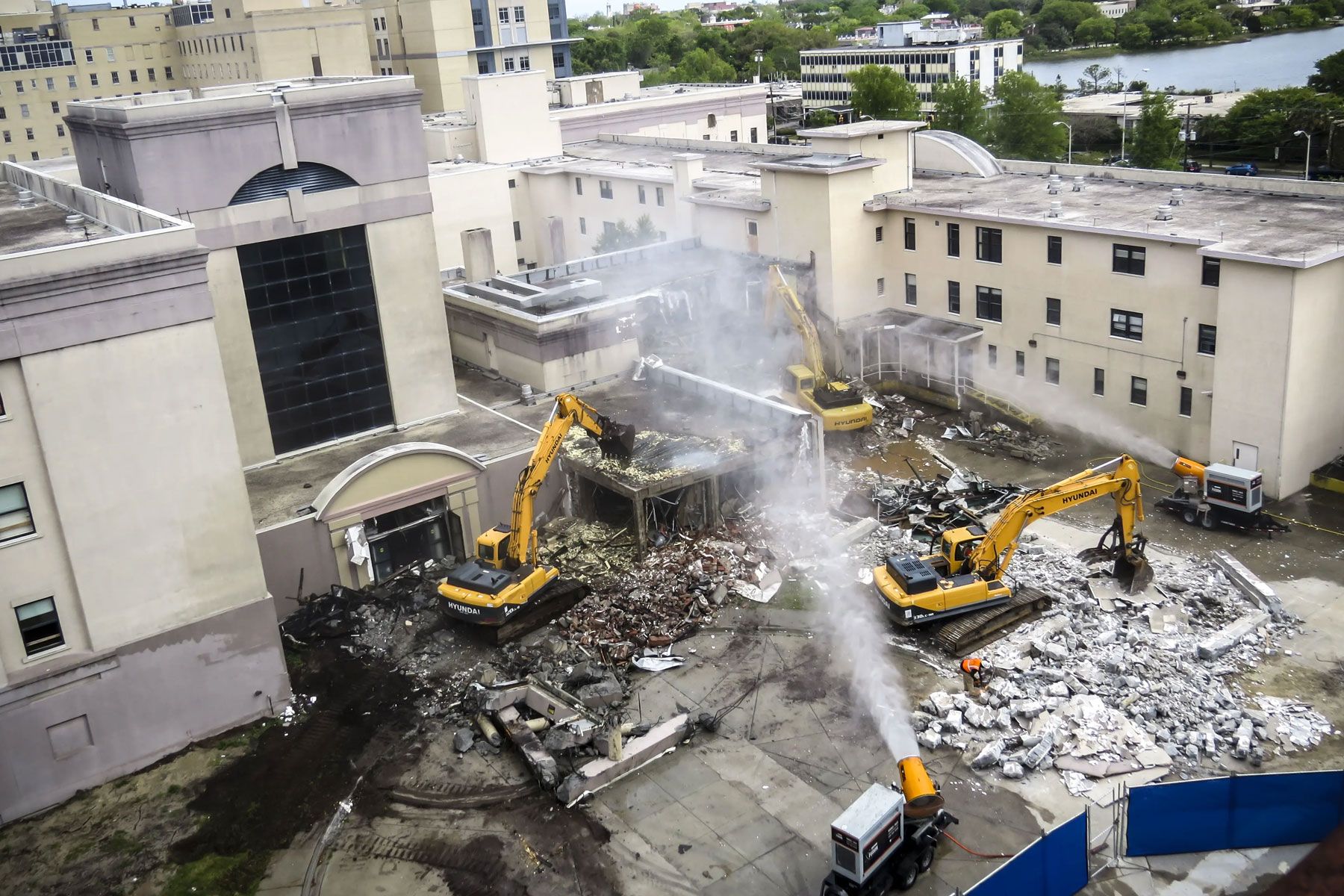
Irrigation and sprinkler systems for dust control – Source: BoosTek
Technologies and strategies to reduce environmental impact on construction sites
To effectively reduce the environmental impact of construction activities, companies must adopt an integrated approach that combines multiple technologies and best practices. These solutions not only help meet environmental regulations, but also protect public health and preserve the natural environment. Below are some of the most widely used technologies and strategies in the construction industry today.
Dust suppression with watering and spraying systems
One of the most effective ways to manage construction site dust is through watering and misting systems. These systems keep worksite surfaces damp, which significantly reduces the amount of airborne particulate matter. Regular application of water in high-activity zones—such as demolition areas or material transport routes—helps prevent dust from spreading beyond the site boundaries, resulting in better air quality for nearby communities.
Noise barriers, covers, and enclosures
Physical barriers, such as acoustic screens, protective covers, and site enclosures, play a key role in reducing construction emissions of both noise and dust. These structures contain pollutants within the work zone, limiting their impact on surrounding residential or commercial areas. Large-scale construction projects especially benefit from full or partial enclosures that prevent the dispersion of pollutants into the local environment.
Low-emission machinery and alternative fuels
Switching to low-emission construction equipment and using alternative fuels is a crucial step toward reducing the carbon footprintIn a world increasingly affected by climate change, understanding how our everyday actions contribute to its worsening has become essential. The carbon foo...
Read more of construction projects. Electric machinery or vehicles powered by natural gas produce far fewer pollutants than traditional diesel-powered models. This shift contributes to a reduction in CO₂, NOx, and PM10/PM2.5 emissions, and supports the broader goal of green construction and air quality improvement.
Continuous monitoring of air quality and noise levels
One of the most effective environmental protection strategies is real-time monitoring of air quality and noise on construction sites. Advanced systems—such as those developed by Kunak—can simultaneously measure PM10, PM2.5, NO₂, CO, and noise levels with high precision.
This real-time data allows site managers to respond proactively when pollutant levels exceed regulatory thresholds, triggering corrective actions such as adjusting work schedules, enhancing dust suppression, or activating noise control measures.
Environmental management plans for sustainable construction
Environmental management plans (EMPs) are essential to ensure that construction projects follow sustainable practices. These plans define actions to control dust, noise, and emissions, while also addressing waste management and resource efficiency.
In many regions, EMPs must be submitted and approved before the start of construction. They often include requirements for monitoring technologies, eco-friendly construction methods, and compliance with green building standards. By implementing a robust EMP, companies demonstrate their commitment to environmental responsibility and regulatory compliance.
Kunak solutions for measuring and reducing air pollution on construction sites
Monitoring air quality in urban construction areas is not just a regulatory requirement—it’s a growing necessity to protect public health, reduce nuisance to nearby residents, and enable more sustainable construction projects. Activities such as building demolition, earthworks, heavy machinery operation, and the constant transport of materials generate significant emissions of particulate matter (PM10, PM2.5), gaseous pollutants (NO₂, O₃), and high noise levels.
In this context, having access to accurate and real-time measurement tools is essential to distinguish between a project that truly minimizes its environmental impact and one that simply ignores it.
Kunak’s environmental monitoring solutions have become a benchmark for construction companies, engineering firms, and public authorities seeking reliable and precise emissions control on-site. Devices like the Kunak AIR Pro and Kunak AIR Lite stations can monitor key air pollutants, noise levels, and meteorological conditions simultaneously, offering a comprehensive view of the environment throughout every stage of the project.
Thanks to their modular design, portability, and interchangeable sensor cartridges, Kunak’s stations adapt to the specific needs of each project—whether it’s a demolition, excavation, or complex infrastructure development.
One of the most valued features among users is the ability to receive real-time air quality data, set automatic alerts for pollution peaks, and access all information via an intuitive online platform. Unlike other low-cost or unreliable systems, Kunak’s solutions provide validated and stable data that meets the standards required for technical reporting and regulatory compliance.
Projects like the environmental monitoring during the demolition of Madrid’s Vicente Calderón stadium or the recent deployment of Kunak stations at the Paris 2024 Olympic Village construction site prove that accurate monitoring not only protects the environment, but also promotes more transparent and responsible site management.
Ultimately, investing in reliable monitoring technologies like Kunak’s is not just a cost—it’s a strategic decision that allows construction to move forward without compromising health or sustainability.
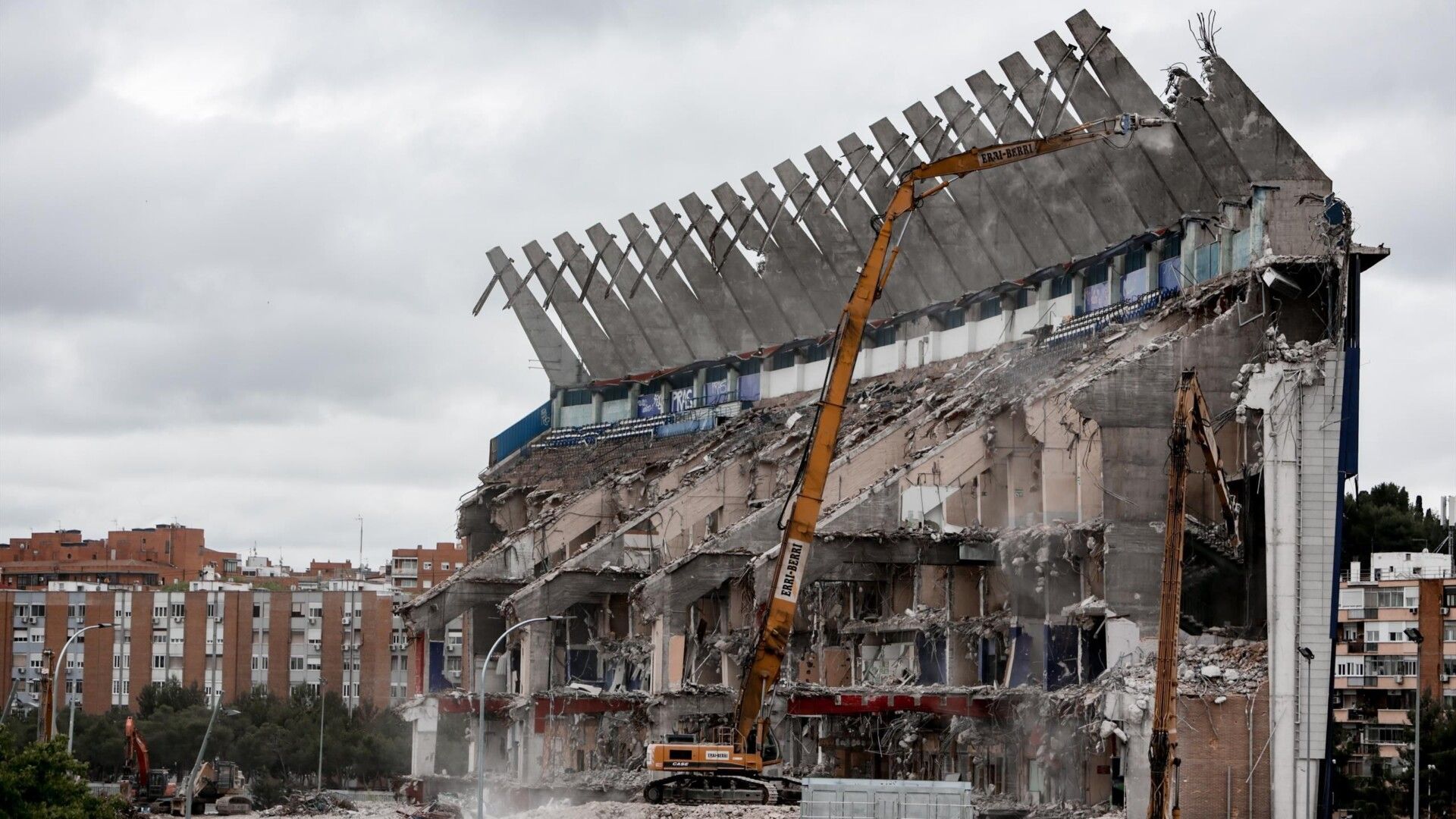
Photo of the demolition process of the Vicente Calderón soccer stadium (Madrid)
Demolition of the Vicente Calderón Stadium
The demolition of the Vicente Calderón Stadium in Madrid is a prime example of the air quality challenges faced during large-scale urban construction. In this project, the contractor Erri Berri deployed Kunak AIR stations to carry out real-time monitoring, a requirement set by the Madrid City Council for all major works in the city.
The environmental monitoring strategy included a network of air quality sensorMeasuring air quality is essential for improving human and environmental health. Changes in the natural composition of the air we breathe are common in ind...
Read mores measuring the following parameters:
- Gaseous pollutants: CO, NO₂, SO₂, O₃
- Particulate matter: PM1, PM2.5, PM10
- Noise levels
- Weather conditions: temperature, humidity, atmospheric pressure
This proactive approach ensured regulatory compliance, reduced community complaints, and provided transparent reporting to stakeholders—demonstrating how modern air quality technologies can facilitate responsible urban development.
¿Necesitas controlar el impacto ambiental de tu obra?
Descarga ahora el informe completo y descubre cómo redujeron la contaminación del aire y cumplieron la normativa ambiental durante la demolición del estadio Vicente Calderón.
Frequently Asked Questions about air pollution in construction sites
What pollutants are generated by a construction site?
Construction sites generate several types of pollutants, primarily particulate matter (PM10 and PM2.5), gaseous pollutants such as NOx, CO, SO₂, and VOCs, as well as noise pollution. These pollutants come from activities like demolition, heavy machinery operation, material transport, and working with construction materials.
How can dust be controlled on a construction site?
Dust control can be achieved through various strategies, such as using sprinkler systems or spraying systems in critical areas, installing physical barriers to contain dust, and adopting machinery with filtration systems. In addition, properly maintaining access roads and regularly cleaning work areas are essential to reduce particle dispersion into the air.
What regulations apply to emissions on construction sites?
Regulations governing emissions on construction sites vary by country and region. In general, these regulations set limits on atmospheric pollution levels, especially for particulate matter and gaseous pollutants. Environmental licenses and management plans are also required to ensure compliance with air quality standards and minimize environmental impacts.
What technologies exist for monitoring air pollution?
Several technologies are available for monitoring air quality on construction sites, such as monitoring stations that measure particulate matter, gaseous pollutants, and noise. Advanced systems, like those from Kunak, allow real-time monitoring, providing precise data that enables quick decisions to control pollution levels.
How do construction works affect the health of nearby residents?
Construction works can negatively impact the health of nearby residents by generating dust, noise pollution, and toxic gases. Prolonged exposure to these pollutants can cause respiratory problems, eye irritation, sleep disturbances, and increase the risk of cardiovascular and respiratory diseases, particularly for vulnerable individuals such as children, the elderly, and people with pre-existing respiratory conditions.
Conclusion: towards cleaner, smarter, and more sustainable construction
The pollution generated by construction works, including dust, gaseous pollutants, and noise, has a significant impact on both public health and the environment. Implementing advanced monitoring technologies is crucial for managing and mitigating these effects from the very beginning of every project. Environmental control solutions like those from Kunak allow for real-time air quality measurement, enabling quick and effective decision-making.
For construction companies, consultancies, and public entities, integrating continuous air quality monitoring into projects not only ensures regulatory compliance but also fosters a more sustainable and responsible approach to environmental impact.
